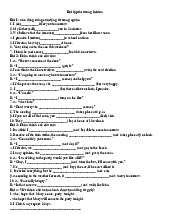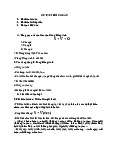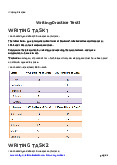

Preview text:
Quizz on Genres, Conversation analysis
Decide whether the following statements are True ( T) or False (F)
1. The discourse type of instruction/procedure tends to have the following
schematic structure:
Goal – (Materials)- Steps. T
2. The discourse type of Argument tends to have the following schematic structure:
Thesis statement/Position ^ Argument A, Argument B, etc. ^ Restatement
of position/summing up/recommendation. T
3. Each genre has typical features, some of which may be linguistics, some
paralinguistic, and some contextual and pragmatic. T
4. Genres cannot overlap, e.g., a joke cannot also be a story and one genre
cannot contain another, e.g., an anecdote cannot be part of a lecture. F
5. Interactional/interpersonal situations usually involve people in interactions
where they wish to obtain information or goods such as phoning a library
for information going to the bank to obtain a new credit , card. F
6. Transactional interactions usually involve people in casual conversations
where the main purpose is to establish or maintain social contact. F
7. In most service encounters in shops in western cultures, the following
structure is common: Offer of service ^ request for service^ Transaction^ Salutation T
8. The structure in a casual conversation is generally as follows: Opening
stage- Middle stage- Ending stage. T
9. In adjacency pairs, the first pair part “warning” can only be followed by the
second pair part “acknowledgement”. F
10. The 3 moves in a classroom exchange are often labelled as T A = Initiation B = Response Blurred content of page 2




